Penang island is a popular holiday destination in the north of Peninsular Malaysia. It is mostly known for its food, culture, and the UNESCO World Heritage Zone in central George Town.
All in all, its a pretty nice place to spend a few days on a holiday, though don’t count on getting a nice beach holiday – Its historically vaunted beaches are now frankly less than stellar.
I took a trip to Penang in mid-2020 and I made the trip up on Firefly, a regional airline owned by Malaysia Airlines. The airline, operating a fleet of AT 72-500 aircraft, focuses on regional and domestic flights in the country, and is based at the more centrally located Subang Airport. This has allowed the airline to occupy a slightly more premium niche in the local aviation market, offering a more convenient option for KL-ites looking to fly out of the city without having to make the trek all the way down to the Kuala Lumpur International Airport in Sepang.
First posted 20 June 2022. Updated 25 February 2023.
Buying my tickets
I bought my tickets on Firefly’s website, with the two-way return Saver ticket costing me RM 388.00 (incl. taxes and charges). The Saver tickets came with a 20kg check in baggage allowance.
As Firefly is a Malaysia Airlines’ subsidiary, customers of Malaysia Airlines’ Enrich frequent flyer program can earn Enrich points (miles) with their Firefly ticket, but not the Elite points required to rank up.
Departure experience at Penang Bayan Lepas International Airport
Penang Airport (PEN) in the Bayan Lepas area is the main air gateway into Penang island. The 50+ year old terminal underwent a modernisation and upgrade between 2009 and 2013, which saw the old terminal deconstructed and rebuilt with new piers and furnishings. Instead of a modern and architecturally coherent terminal building, the project veered off the rails when it came to the main terminal structure. Despite the original plan calling for a brand new roof and an airy check in hall, the original roof structure was maintained behind a modern glass facade and beneath a bare metal framework meant for the new roof.

This means that the check in hall is left unchanged from its previous low-ceiling iteration, which does clash with the more modern parts of the terminal. The old roof was also badly hidden behind the glass facade, and can still be seen if you look up right after walking past the main doors.
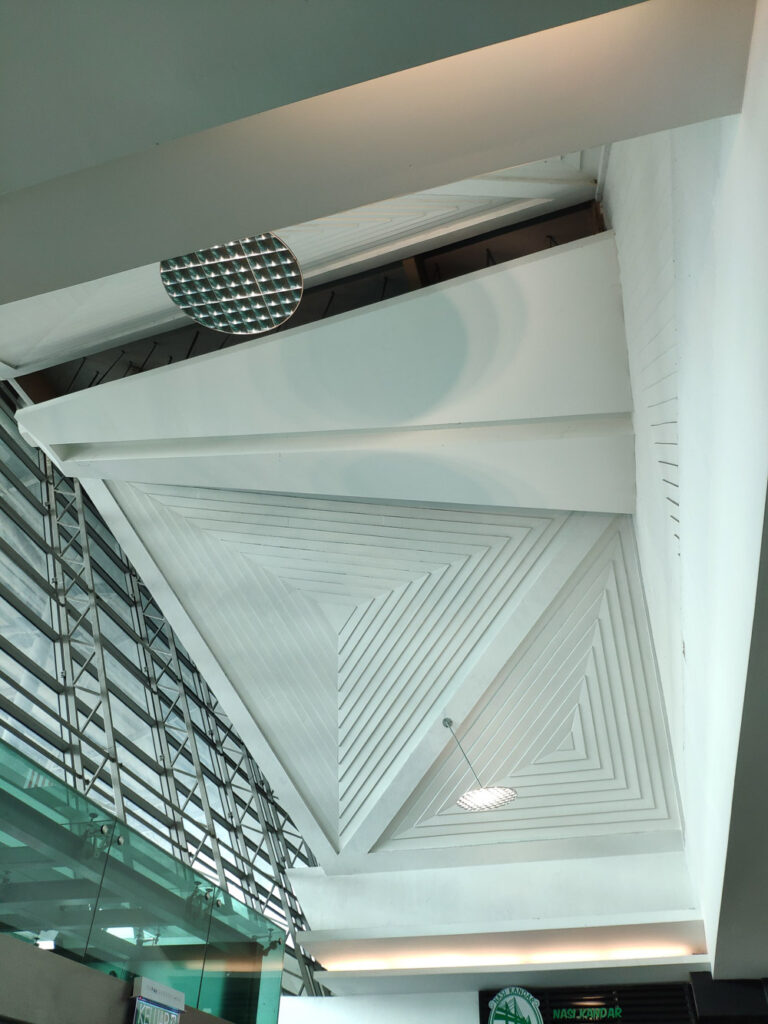
Beyond that, the terminal is a decent one. I recommend not looking too closely at the furnishings and the internal layout as these can really bug you once you start to think about it.
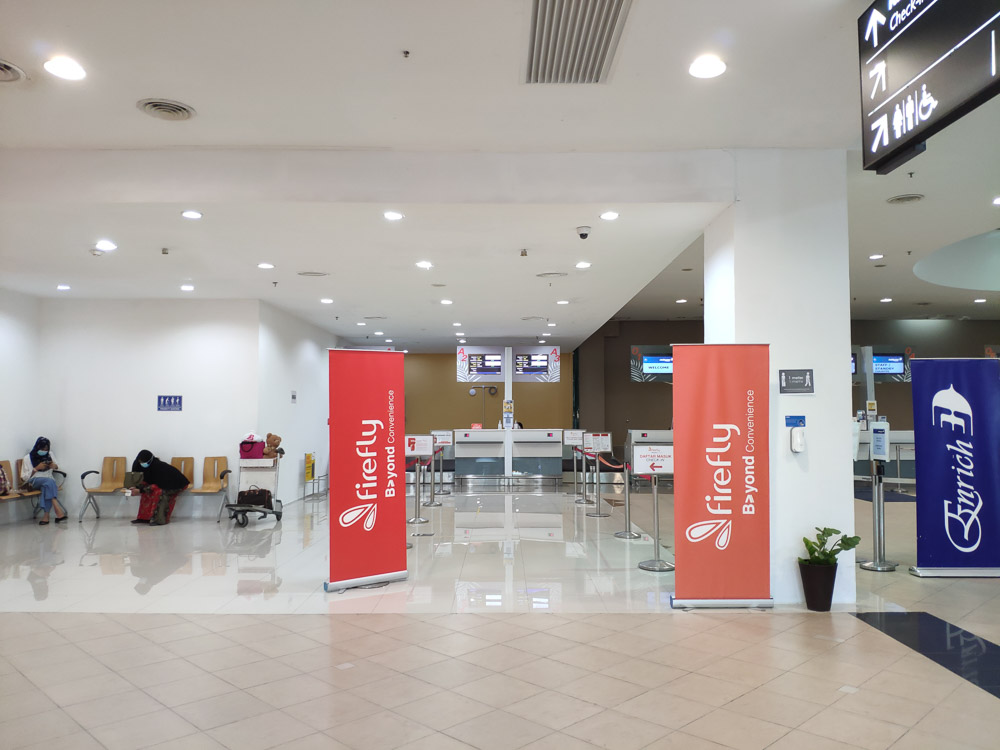
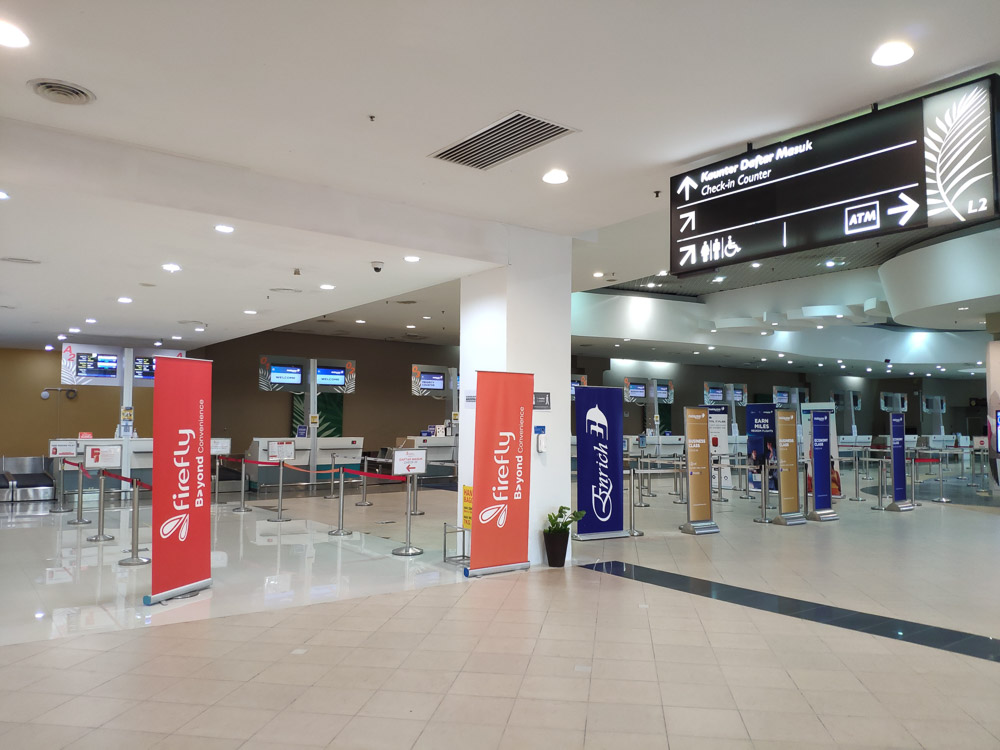
I’d previously checked in online, so I made a quick pop by the check in counters to drop my roller bag. All Firefly flights come with a check in baggage allowance, with the lowest tier Saver fare giving a 20kg check-in bag allowance.
This was still the height of the COVID-19 pandemic, and traffic at PEN had still not returned to normal. Case in point – the departures and arrivals board featured a list of previously scheduled international and domestic flights, now listed as “cancelled”.
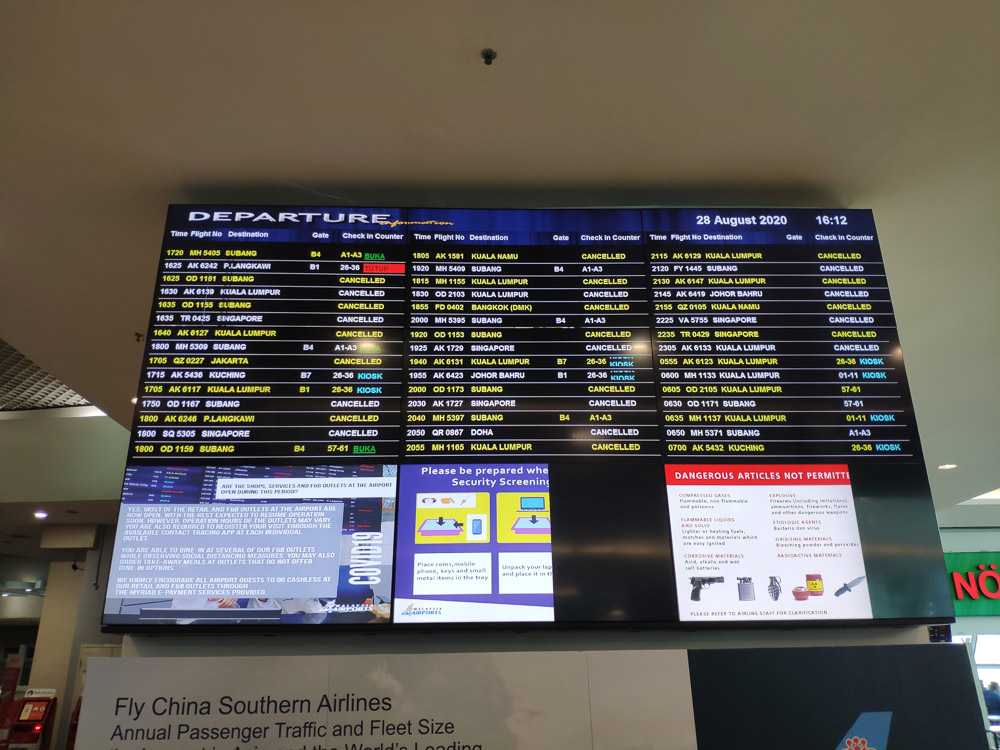
There are a couple of food options before security at Penang Airport, consisting of the usual fast food offerings and what seems to be a Nasi Kandar restaurant on one end of the terminal. I’d recommend getting something to eat before security, as food options at the gate area are very limited.
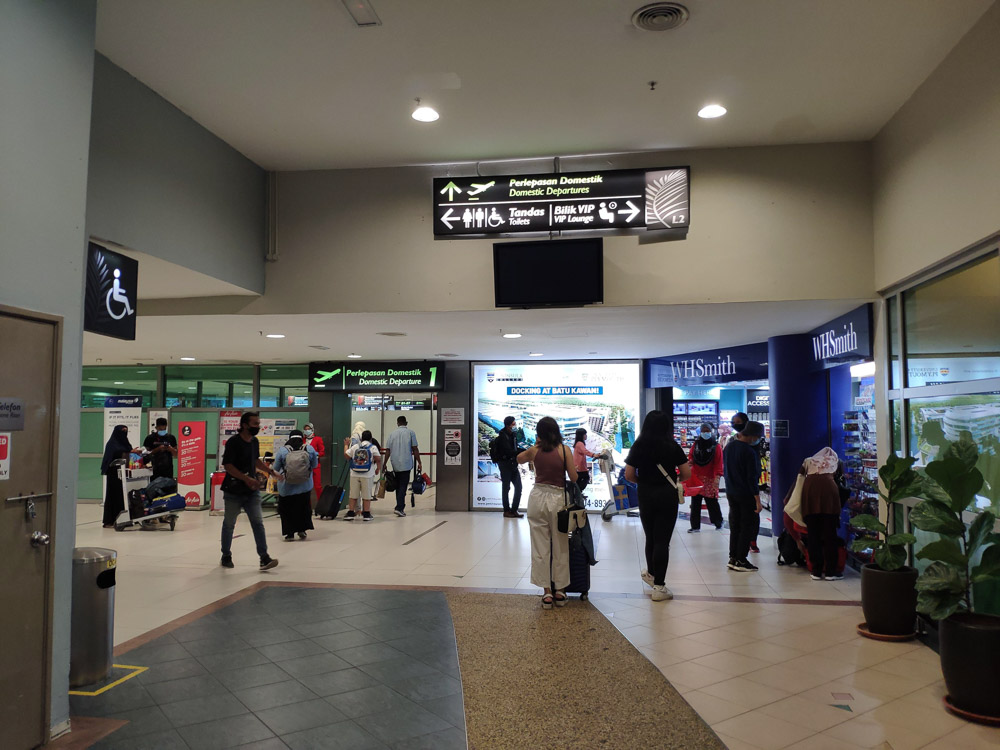
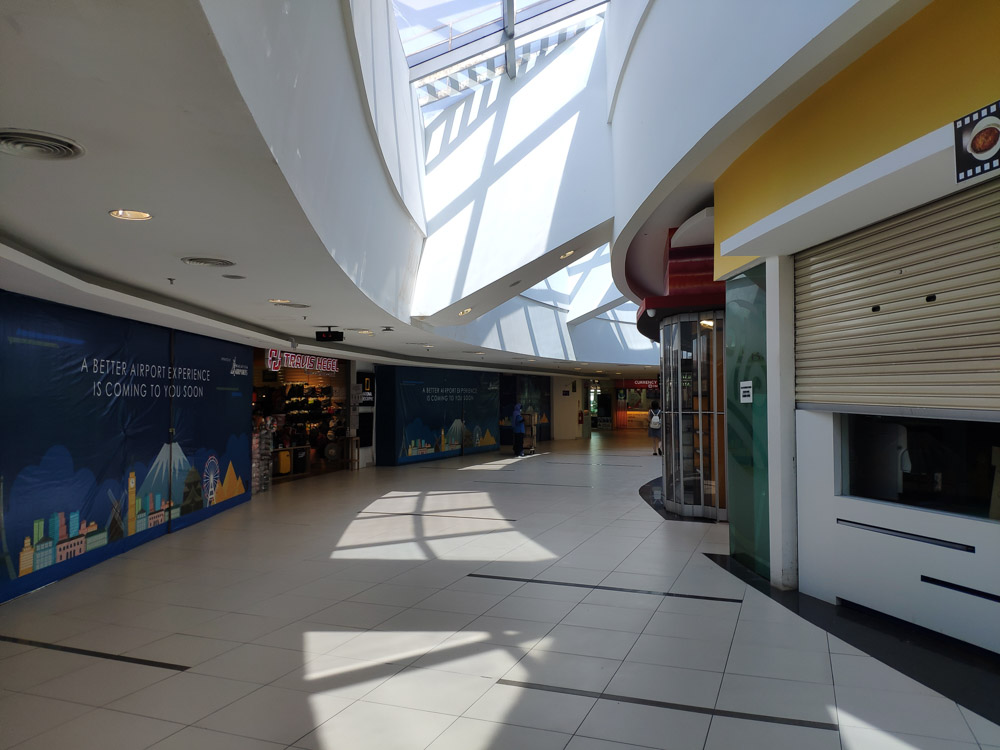
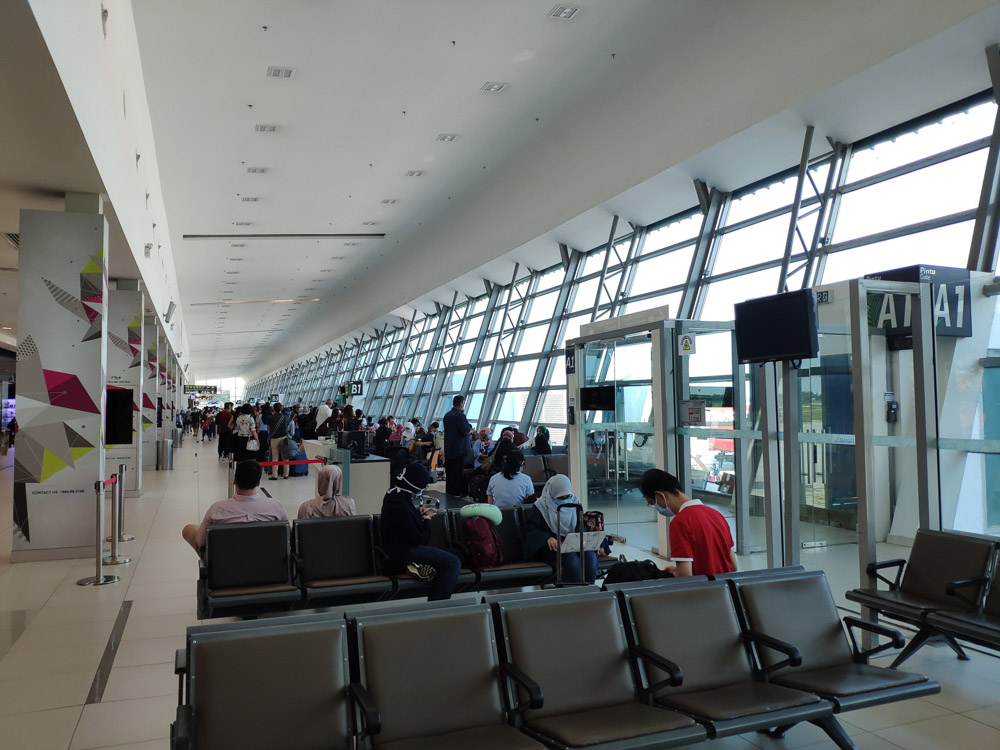
My flight was scheduled to depart at 5:20 pm and there was still time to kill. The gate area at Penang Airport stretches the length of the pier and coupled with the long glass wall, makes it a decent area for plane spotting.
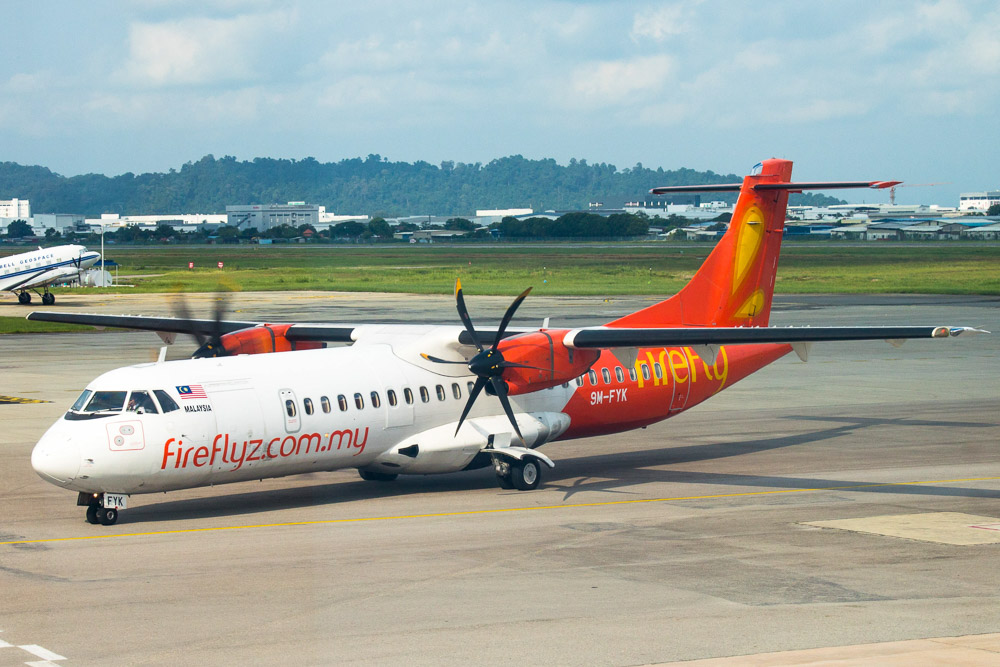
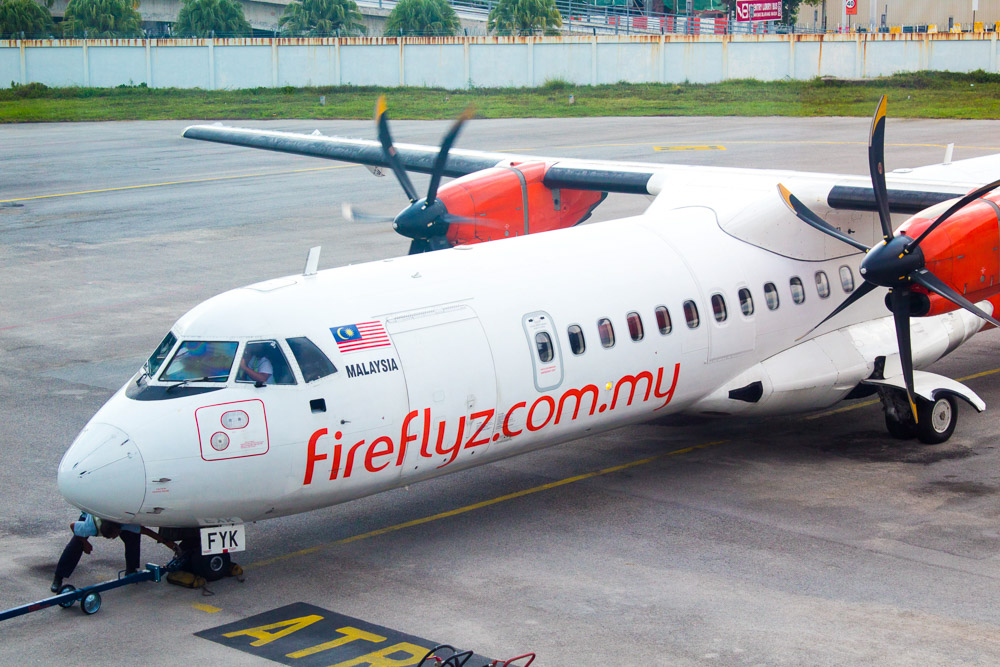
At 5:10 pm, 9M-FYK landed from Subang and taxied into the turboprop apron. With a short turnaround time, our flight was soon declared ready for boarding at 5:20pm, albeit delayed from the original boarding time of 4:50pm.
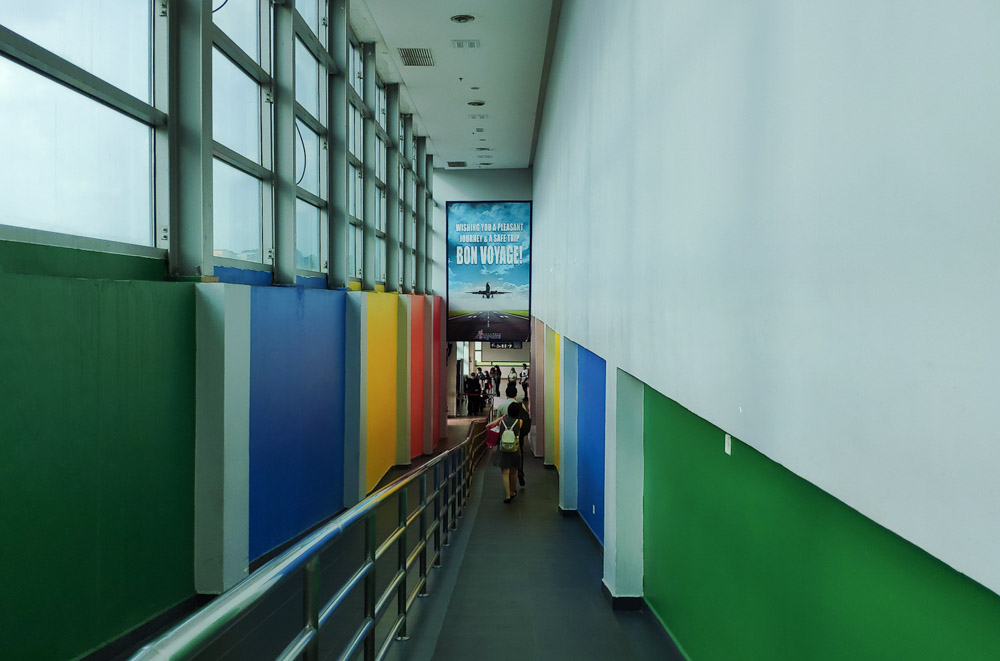
Firefly uses the turboprop apron located on the opposite side of the tail end of the domestic pier. In line with the layout for the rest of the airport, there are no segregated gate holding rooms and so Firefly passengers tend to hang around the Dunkin Donuts right next to the ramp down to the actual gate.
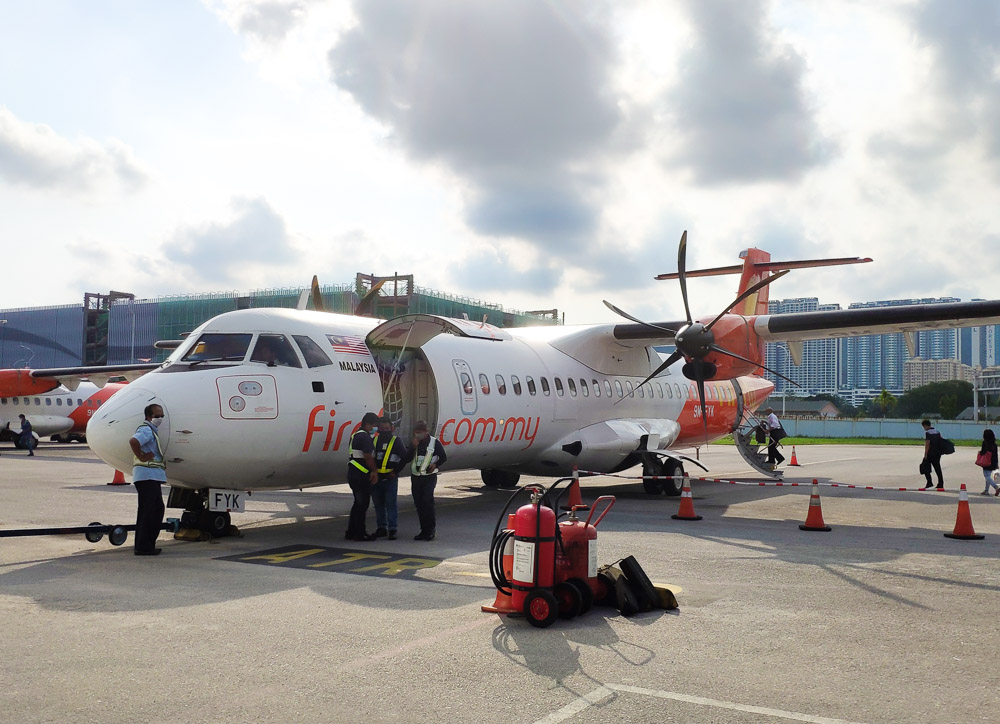
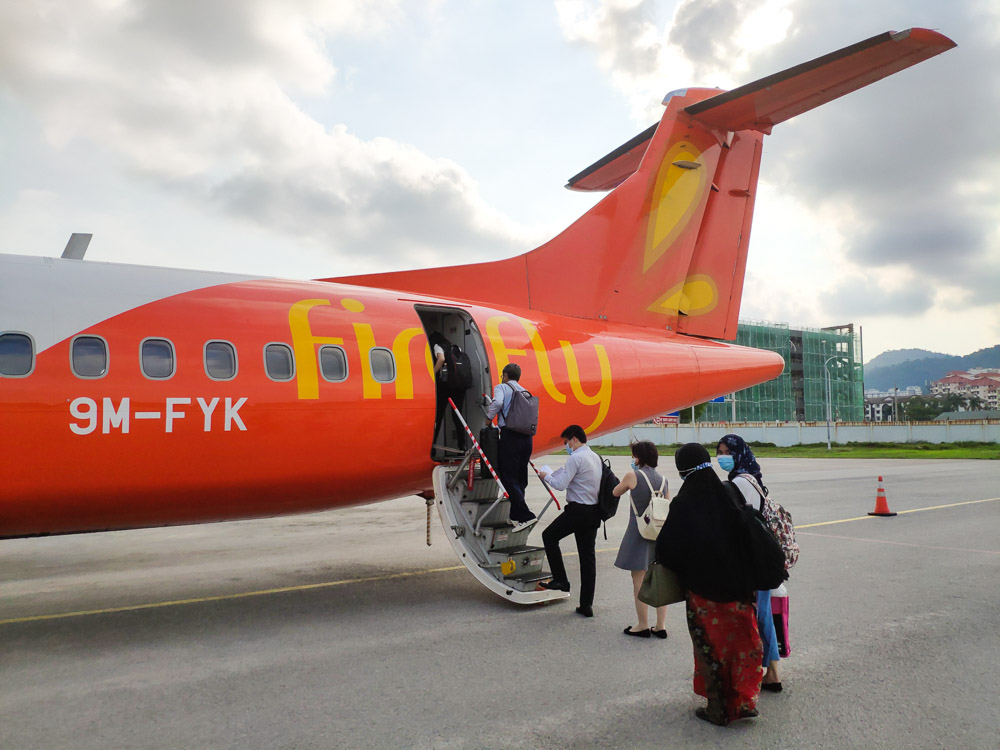
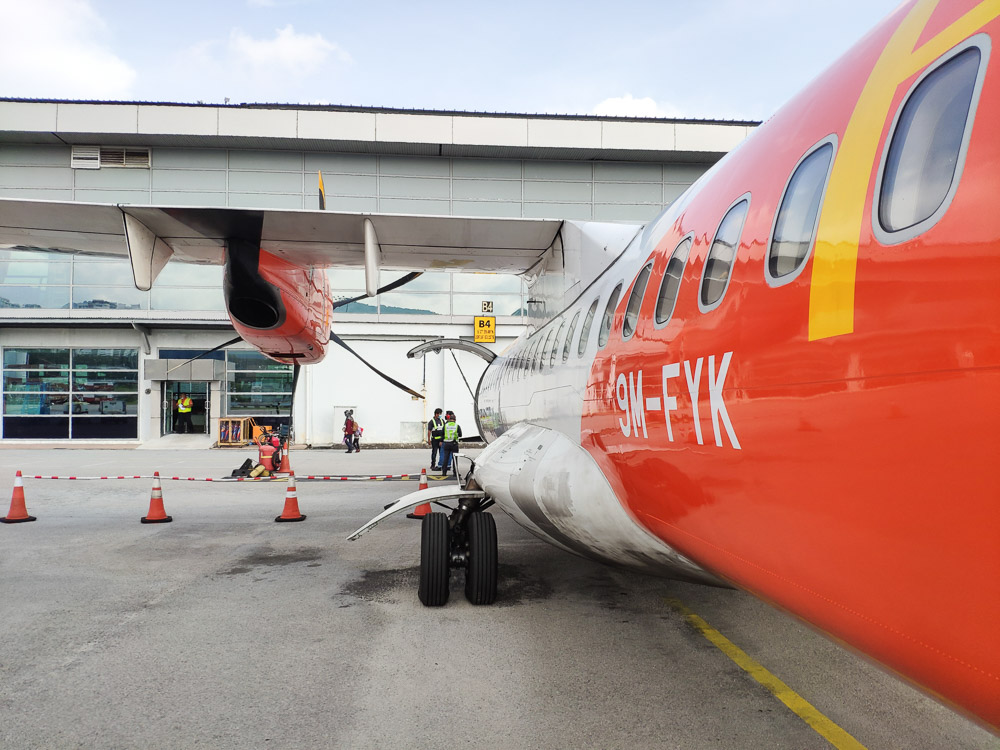
Boarding was completed on time with a healthy load of approximately 60 – 70% seats occupied. We were pushed out of the parking position and the twin Pratt & Whitney engines were started up with a roar.
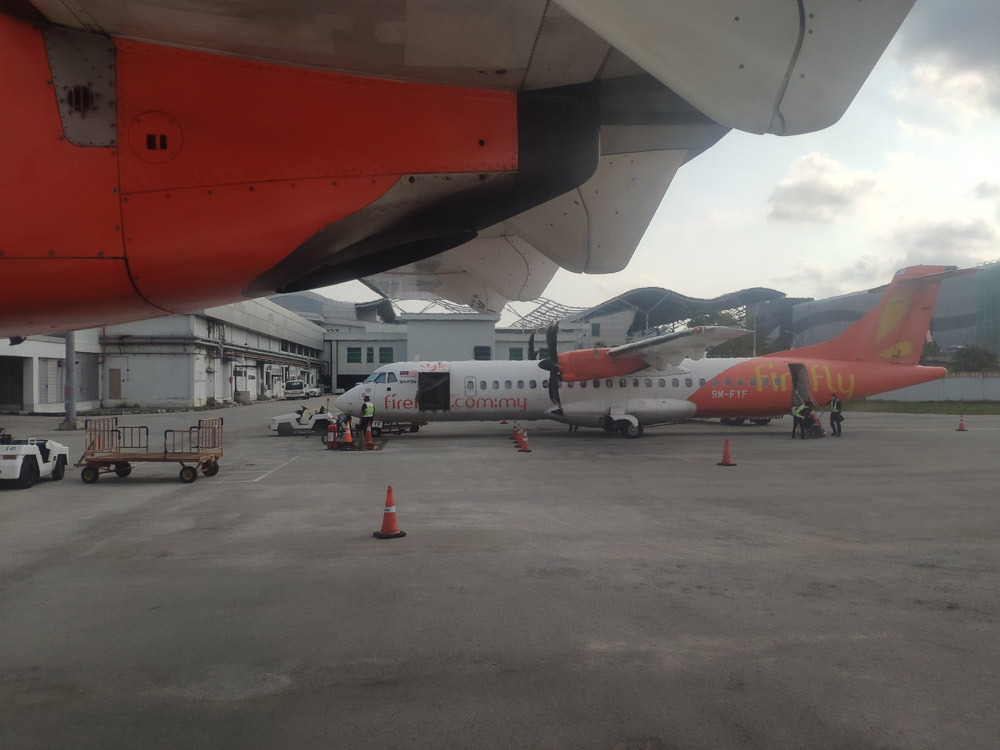
PEN was operating with runway 22 departures and arrivals, necessitating a long taxi to the other end of the runway. Being a light aircraft, our little ATR was up in the air in no time, with the departure track giving us a nice overview of the airport terminal.
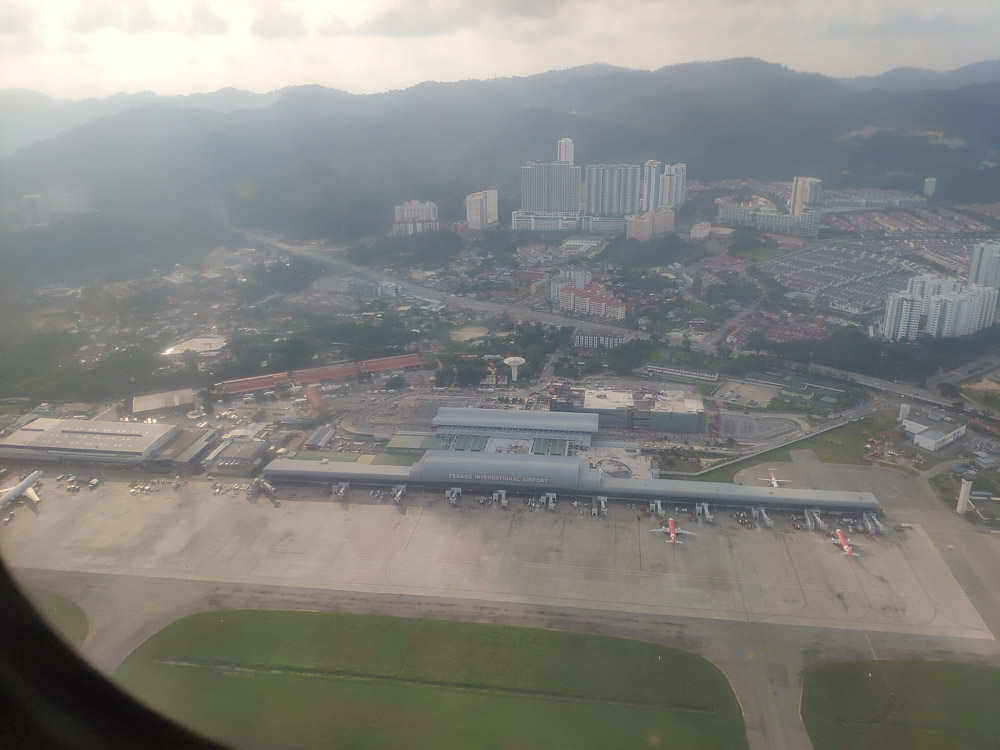
Cabin & Onboard Amenities
Firefly operates its ATR fleet with 72 Economy class seats in a 2-2 configuration, each with 29 inches of pitch. This is very adequate for the short hops that Firefly operates.
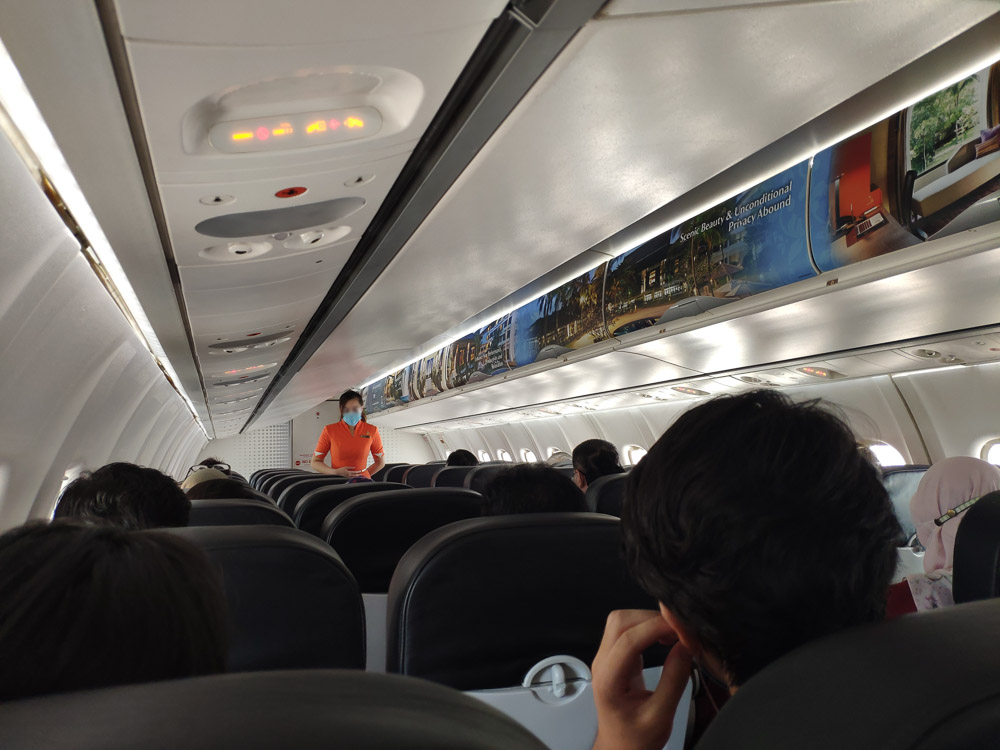
Firefly had recently refurbished its seats at that time, but it still failed to hide that the cabin furnishing themselves were already worn and visibly ageing.
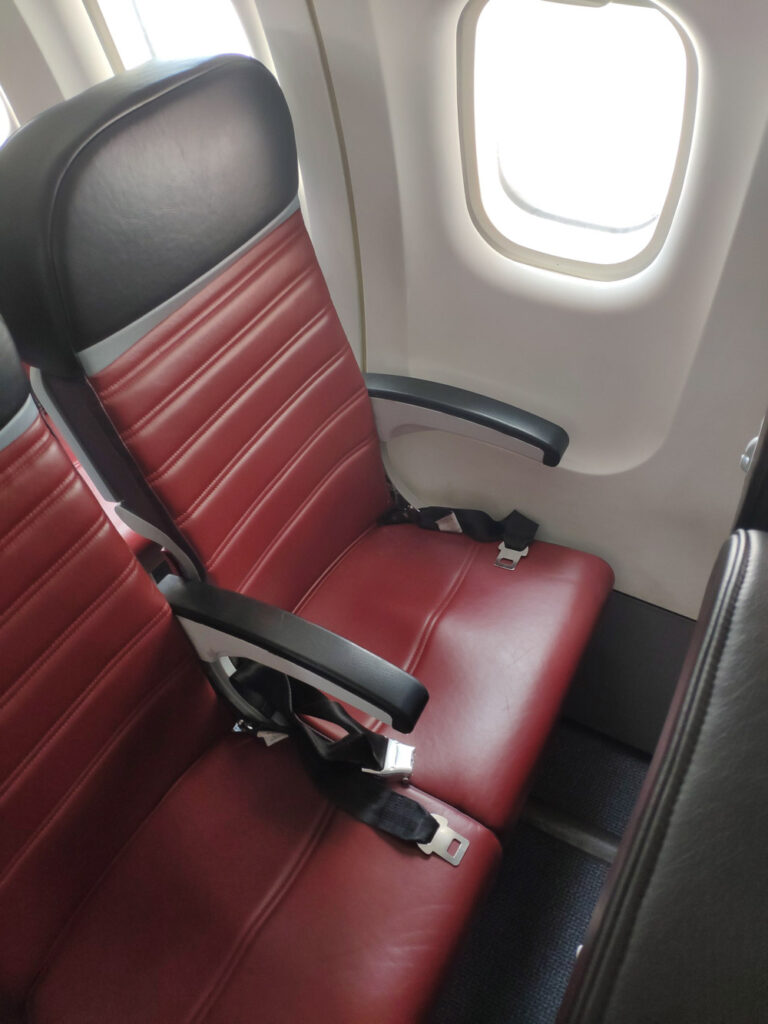
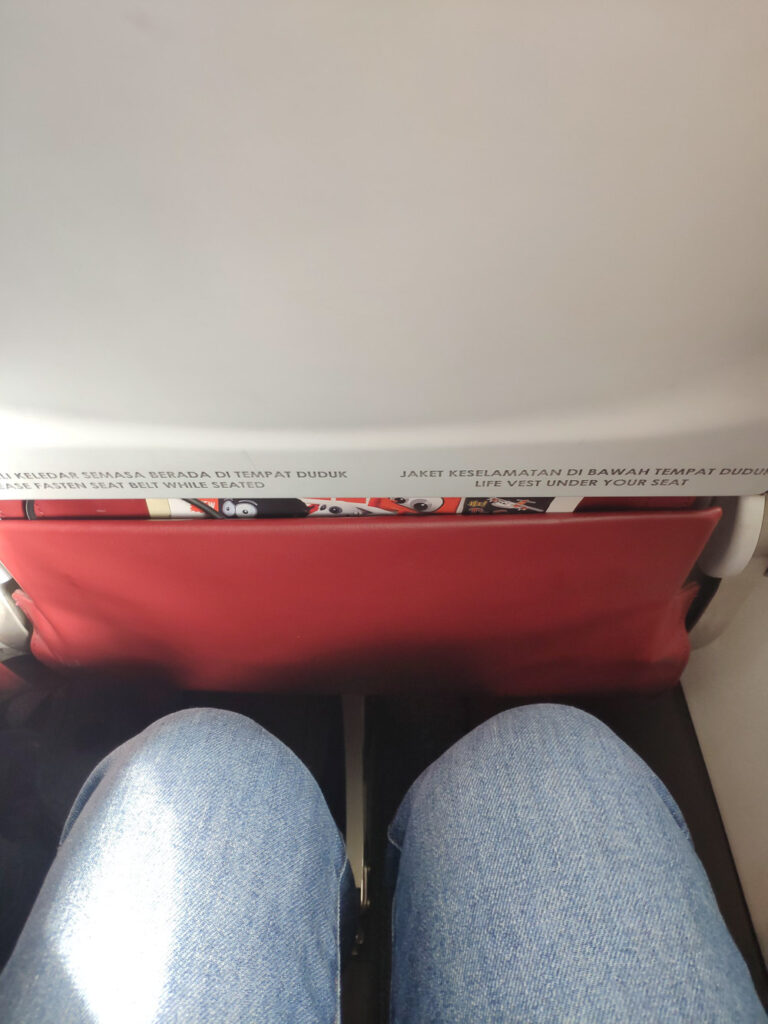
I felt that the interiors of the Dash 8 operated by Flybe were better kept and fresher. Firefly’s cabin in contrast feels tired and dingy, and much like the aircraft on the outbound sector this one had murky windows too.
I wouldn’t say that the state of the cabins are a dealbreaker for me, but it does make a bit of a bad first impression.
Onboard Catering
Firefly serves a complimentary snack and drink on every turboprop flight. On this flight and the outbound, a pack of peanuts were offered, together with a choice of either apple or orange juice – I went with the orange.
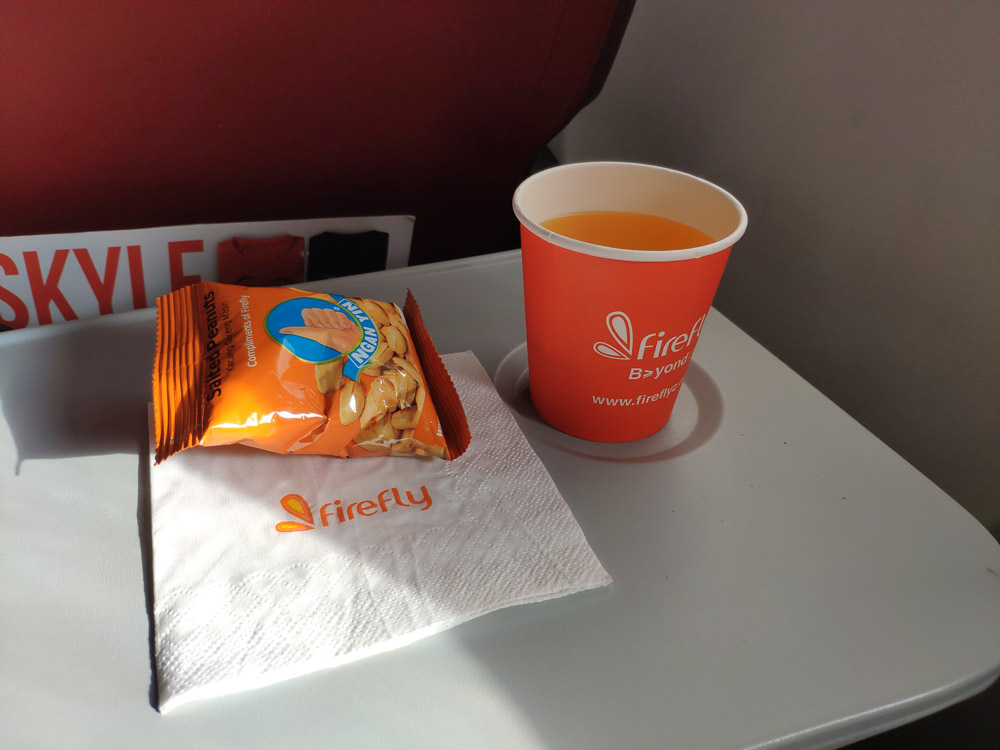
Firefly doesn’t serve meals on its turboprop flights, but it does offer them for sale on their jet flights out of PEN.
Arrival at Subang Skypark
Our arrival at Subang was a standard runway 15 arrival . Being a small plane, our little ATR didn’t need much runway to slow down.
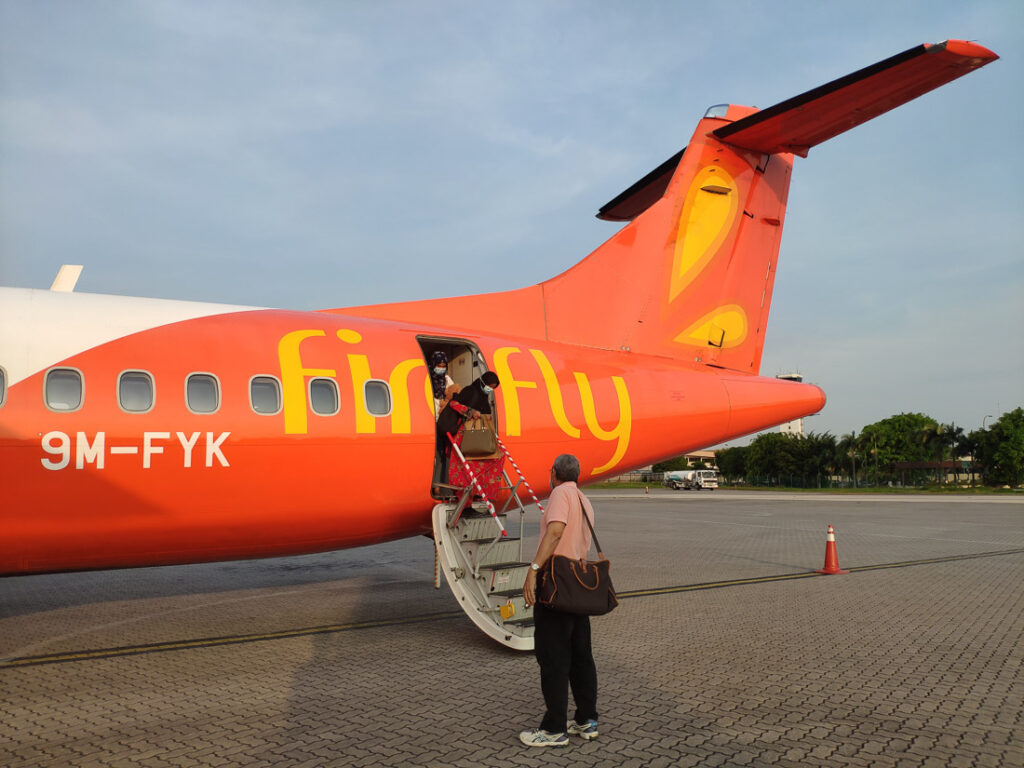
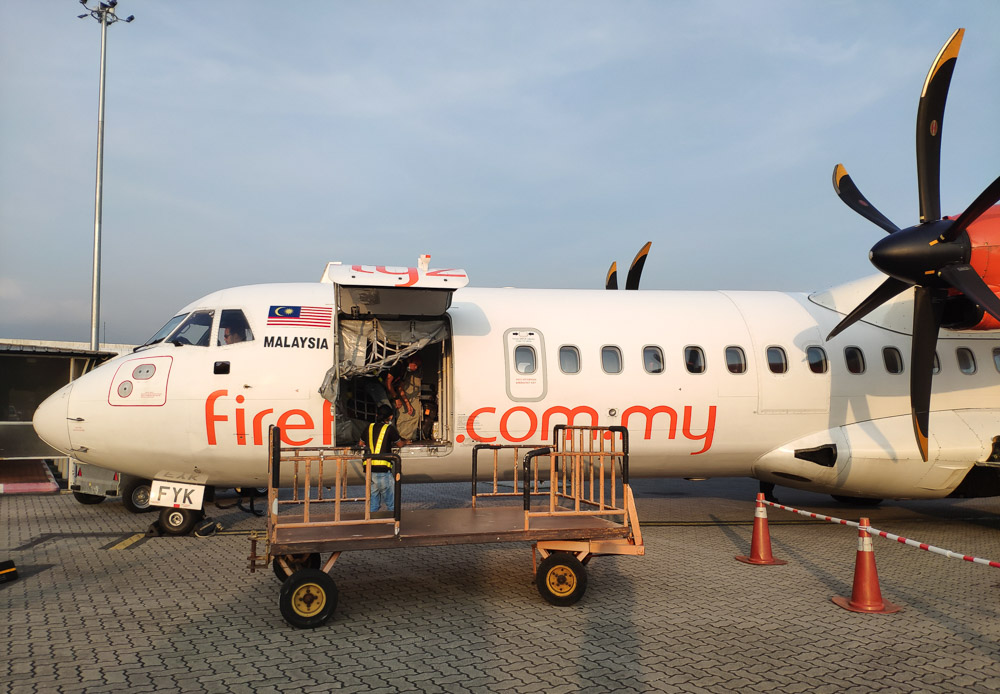
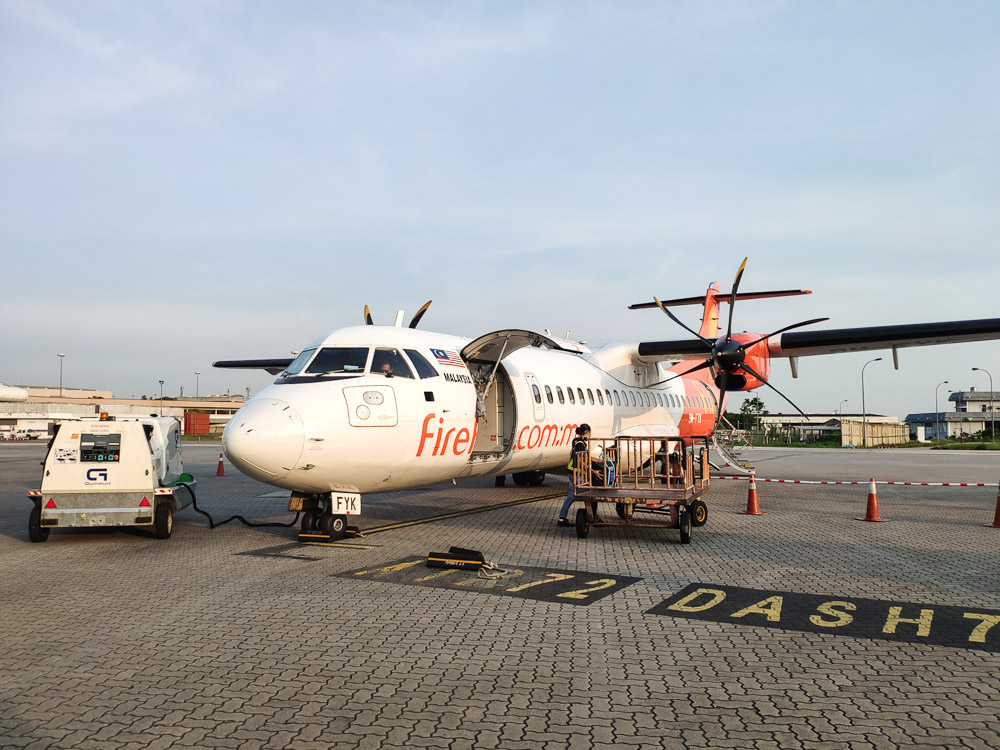
The domestic arrivals experience at Subang is far simpler than at KUL – you simply walk round the terminal to the baggage hall. Our bags were out within 10 minutes, and then we were on our way.

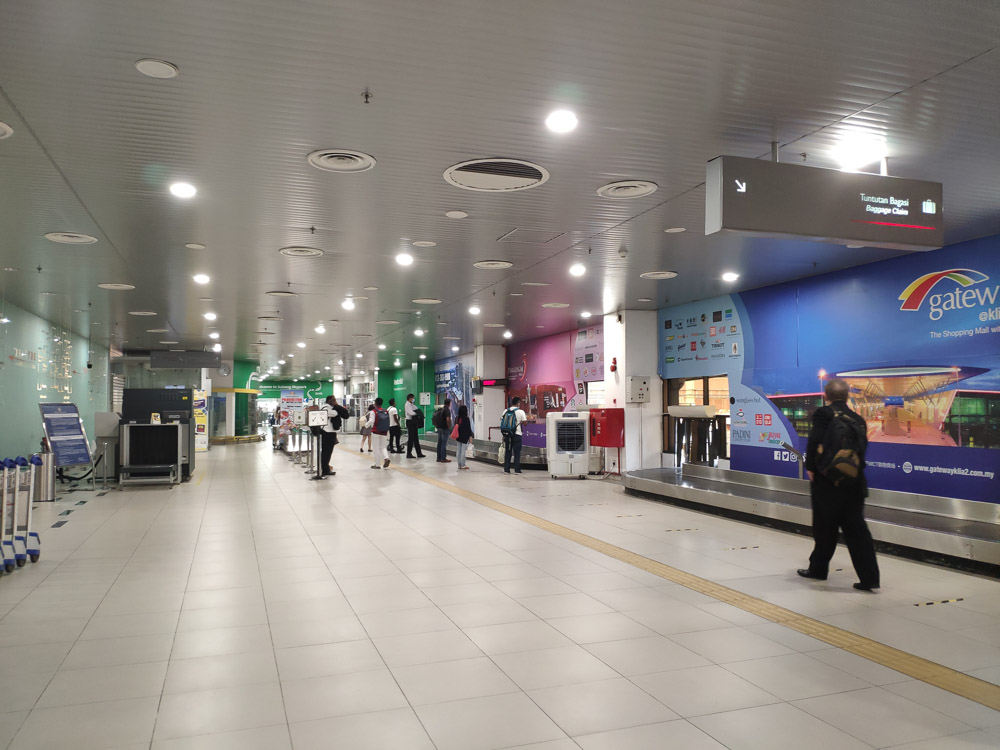
Final thoughts
Firefly is actually a pretty decent regional connector with a good offering at prices lower than the usual MH fares out of KUL. Plus, Subang Airport’s proximity to urban KL is also its strength (which conversely was why major operations were moved to KLIA in the first place), which makes flying with Firefly an easy experience.
Nonetheless, the airline does need to take more care with its onboard product. It was the only sore point in what was otherwise an enjoyable flight.

Comments
One response to “REVIEW | Firefly FY1437 from Penang to Subang Skypark”
[…] Firefly FY1437 from Penang to Subang Skypark […]